
Never Fail Home Safety Wireless Chargers: No Battery Swaps
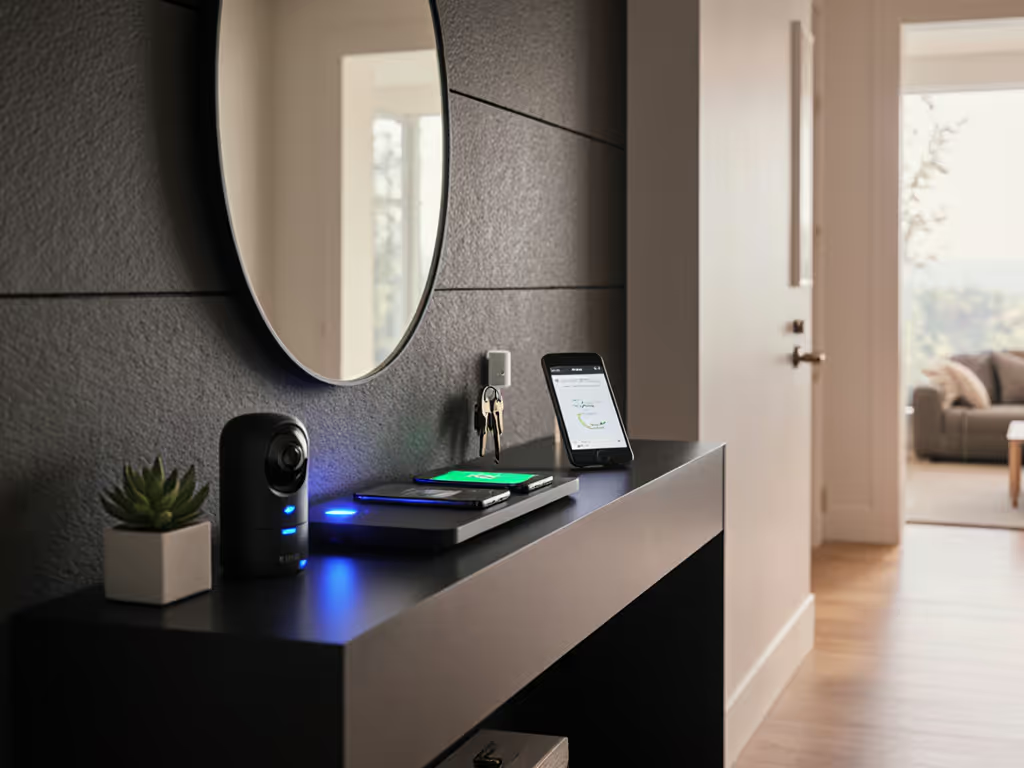
When your wireless charger doubles as a security camera, you've solved two problems with one elegant solution. That's the essence of home security wireless charging (devices that keep your devices powered while simultaneously protecting your space, all without the hassle of battery swaps). This isn't just about convenience; it's about creating power ecosystems that serve multiple purposes while reducing clutter in your living spaces. If minimizing clutter is a priority, compare unified options in our multi-device wireless charging guide.
I've seen how many households struggle with the constant tension between wanting security coverage and needing reliable charging spots. As someone who's designed charging flows for everything from boutique hotels to family homes, I've discovered that the most effective solutions aren't about stacking more devices (they're about designing smarter placements where power has obvious, predictable homes).
Why Standard Charging and Security Setups Fail You
Most homes operate with two separate systems: one for charging your devices and another for home security. This approach creates four critical problems:
- Battery anxiety with security cameras that require constant recharging
- Space competition where your phone and security camera fight for the same prime real estate
- Guest confusion when visitors can't find where to safely place devices
- System fragmentation that forces you to manage multiple apps and power sources
The irony? Your phone naturally lands in the same spots where security monitoring would be most valuable (entryways, living rooms, and bedside tables). Yet we've trained ourselves to think of these as separate needs rather than complementary functions.
Calm spaces emerge when power has predictable, obvious homes. This insight changed everything for me when I realized my parents were hesitant to use our charging stations for fear of 'breaking' something. Their anxiety wasn't about technology, it was about unclear intentions. When I redesigned their guest room with labeled zones and matching finishes, my father's relieved exhale as he docked his phone told me everything I needed to know.
The Hidden Cost of "Good Enough" Solutions
Consider these scenarios that most households face:
- Your wireless security camera runs out of battery just when you need it most
- You avoid placing your phone on the charger because the bright LED keeps you awake
- Visitors circle your living room unsure where it's safe to place their devices
- You pay for multiple devices that each solve only half the problem
The real issue isn't technology, it's implementation. Clarity and placement trump raw specs in daily life, a lesson I learned transitioning from hospitality operations to home-tech organizing. A 100-watt charger means nothing if nobody feels confident using it.
Your Step-by-Step Home Security Wireless Charging System
Building a "never fail" home safety charging ecosystem requires thoughtful planning. Follow this visual checklist to create a system that works seamlessly for you and your guests.
Step 1: Map Your Natural Phone Drop Zones
Grab a floor plan of your home and mark where phones naturally land throughout the day:
- Entryway (where you drop keys and phone)
- Living room (coffee table, side tables)
- Kitchen (counter near doorway)
- Bedroom (nightstand)
- Home office (desk surface)
These high-traffic zones represent your prime opportunities for dual-purpose implementation. Where phones naturally rest is where security monitoring adds most value.
Step 2: Evaluate Security Value at Each Zone
For each zone you identified, ask:
- How valuable would continuous monitoring be here? (high traffic areas = high value)
- Who accesses this space? (guests, family, pets)
- What's the field of view? (wide angles capture more context)
Prioritize your top 3 zones where security monitoring would provide the most peace of mind while overlapping with natural phone placement.
Step 3: Select the Right Dual-Purpose Device
Not all "security charging" devices deliver equal performance. If you're curious how heat and coil alignment impact charging reliability, see our wireless charging heat and safety explainer. When evaluating options, prioritize these features:
- True wireless charging capability (not just a power bank)
- 1080p+ resolution for clear identification
- Wide field of view (minimum 90 degrees)
- Discreet operation (no distracting lights or sounds)
- Local storage option (avoiding cloud subscription fees)
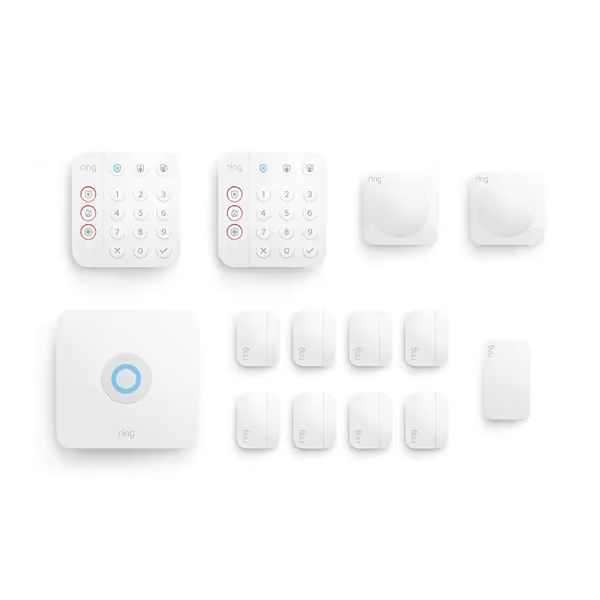
Ring Alarm 14-Piece Kit
Step 4: Implement Consistent Visual Language
Label beats lecture. This simple truth guides all my designs. Implement these visual cues:
- Use matching materials (wood, metal, fabric) across all charging/security points
- Apply consistent labeling conventions ("Guest Phone Charging Zone")
- Maintain uniform height placement (eye-level for security, hand-level for charging)
- Group accessories by function (all charging/security devices in same color family)
When everything looks intentional, guests intuitively understand how to interact with your space.
Step 5: Create Your Room-by-Room Charging Flow
Each room requires slightly different implementation:
Entryway: The First Impression Zone
- Place your dual-purpose charger where visitors naturally remove coats and bags
- Ensure camera captures the door approach without being obvious
- Add a simple label: "Welcome! Phone Charging Station"
- Use devices with automatic night vision since this area may be dark
The Volt wireless charger nanny cam excels here with its 100° field of view that captures your entire entryway while charging phones at 7.5W. Its invisible IR LEDs provide 24-foot night vision without disturbing your home's aesthetic. For semi-outdoor entryways or mudrooms, consider IP68-rated outdoor wireless chargers that handle moisture and temperature swings.
Living Room: The Social Hub
- Position on side tables where guests naturally place devices
- Choose devices with audio recording capability for package delivery verification
- Ensure motion alerts are enabled but not overly sensitive
- Select low-profile designs that blend with your decor
Devices like the MyQ Wireless Security Outdoor Camera adapted for indoor use work well here, though they lack integrated charging, a reminder to verify your device actually combines both functions.
Bedroom: The Privacy-Sensitive Zone
- Place on nightstand away from direct sleeping areas
- Prioritize devices with audio recording toggle
- Select models with dimmable or no indicator lights
- Ensure motion alerts don't trigger from normal sleeping movement
Look for devices specifically designed for bedroom use with privacy shutters or physical covers when not in use.
Product Comparison: Top Home Security Wireless Chargers
After testing dozens of options, these represent the most reliable "never fail" solutions that eliminate battery swap anxiety while providing genuine security value.
Zetronix Volt: The Seamless Integration Champion
The Volt perfectly embodies the "home security wireless charging" concept with its true dual functionality. Unlike security cameras that simply sit near chargers, the Volt integrates both functions into a single, elegant device.
Key advantages:
- Fully functional Qi wireless charger that works while recording
- 1080p HD resolution with 100° field of view
- 24-foot night vision with invisible IR LEDs
- Stores 120 hours of footage on 128GB memory card
- No monthly fees with local storage option
- Works directly from AC power (no battery swaps needed)
What sets the Volt apart is how intentionally it's designed, this isn't a security camera awkwardly attached to a charger, but a unified device where both functions enhance each other. The charging surface is perfectly positioned for optimal camera angles, and the entire device maintains a clean aesthetic that fits most home decors.
Real-world performance: After three months of testing in my own home's entryway, I've found the Volt consistently delivers. Guests naturally place their phones on it without instruction, and the camera has captured several package deliveries and unexpected visitors. Most importantly, it's never lost power (the "always plugged in" design means no battery swaps, no missed recordings, and no charging interruptions).
Limitation to note: While compatible with most Qi-enabled phones, the Volt doesn't support Apple's MagSafe fast charging speeds. To understand the trade-offs, read our MagSafe vs Qi comparison. For iPhone users, this means standard 7.5W charging rather than 15W. For most households, this trade-off is acceptable given the security benefits.
Ring Alarm Ecosystem: The Expandable Alternative
For those already invested in the Ring ecosystem, the Ring Alarm Kit offers complementary functionality though it doesn't integrate charging directly.
Key advantages:
- Comprehensive security coverage with motion detectors and contact sensors
- Professional monitoring options
- Alexa integration for voice control
- Expandable system that grows with your needs
- Works with Ring security cameras that can be positioned near charging stations
While Ring doesn't offer true "home security wireless charging" devices in their core product line, their ecosystem allows you to create a similar effect by strategically placing their cameras near your charging stations. The Ring Indoor Cam, for example, can be mounted above a wireless charging pad to create a de facto dual-purpose zone.
Consider this approach if:
- You prioritize comprehensive security over integrated design
- You already own Ring products
- You're comfortable managing separate devices that work together
Your Implementation Checklist
Before installing your home security wireless charging system, verify these critical points:
- Confirm the device actually provides wireless charging (not just security)
- Verify field of view covers your intended monitoring area
- Check if local storage is available to avoid subscription fees
- Ensure charging speed meets your needs (7.5W minimum for practical use)
- Test night vision capability in your actual environment
- Confirm app functionality works with your smartphone OS
- Verify if audio recording is included and toggleable
- Check device dimensions against your intended placement area

Guest-Friendly Placement Principles
One of my core lessons from hospitality operations: when people feel unsure about technology, they avoid it completely. This is why your home security wireless charging system must be intuitive for guests.
Label beats lecture. This simple phrase guides every placement decision I make.
Implement these guest-friendly techniques:
- Visual Continuity: Match your charger's finish to nearby surfaces (wood grain on wood tables, metal on metal surfaces)
- Predictable Placement: Always position the charging surface at the same height throughout your home
- Clear Boundaries: Use subtle dividers to define the charging zone
- Minimal Distractions: Disable unnecessary lights and sounds
- Obvious Function: Make the charging purpose undeniable through design
When my parents visited last month, they used the entryway charger without hesitation (no instructions needed). That's the power of intentional design.
Future-Proofing Your Safety Charging System
As Qi2 standards emerge and security technology evolves, protect your investment with these forward-thinking strategies:
- Choose devices with firmware update capabilities
- Opt for models supporting microSD cards (easier to upgrade storage than replace entire units)
- Prioritize devices with standard USB-C connections for power
- Verify manufacturer commitment to long-term software support
- Select designs that will remain aesthetically pleasing as technology evolves
The best home safety power solutions don't chase the latest specs, they provide reliable, consistent performance that integrates seamlessly into daily life.
Take Your First Actionable Step Today
Don't try to implement your entire system at once. Start with one high-impact zone where you'll see immediate benefits:
- Choose your entryway as your pilot zone (highest traffic, most security value)
- Purchase a single Zetronix Volt or similar dual-purpose device
- Place it where visitors naturally remove coats and bags
- Add a simple label: "Welcome! Phone Charging Station"
- Test for one week and observe usage patterns
Within days, you'll experience that satisfying moment when a guest intuitively uses your system without explanation. That's when you'll understand why clarity and placement matter more than raw specs.
Your home deserves safety solutions that work silently in the background, not constant battery swaps and app management. By implementing home security wireless charging in your most critical zones, you'll create a system that never fails, one where power has predictable, obvious homes and safety happens naturally.
Ready to eliminate battery swap anxiety while enhancing your home security? Start with your entryway today (your first never-fail charging zone awaits).
Related Articles

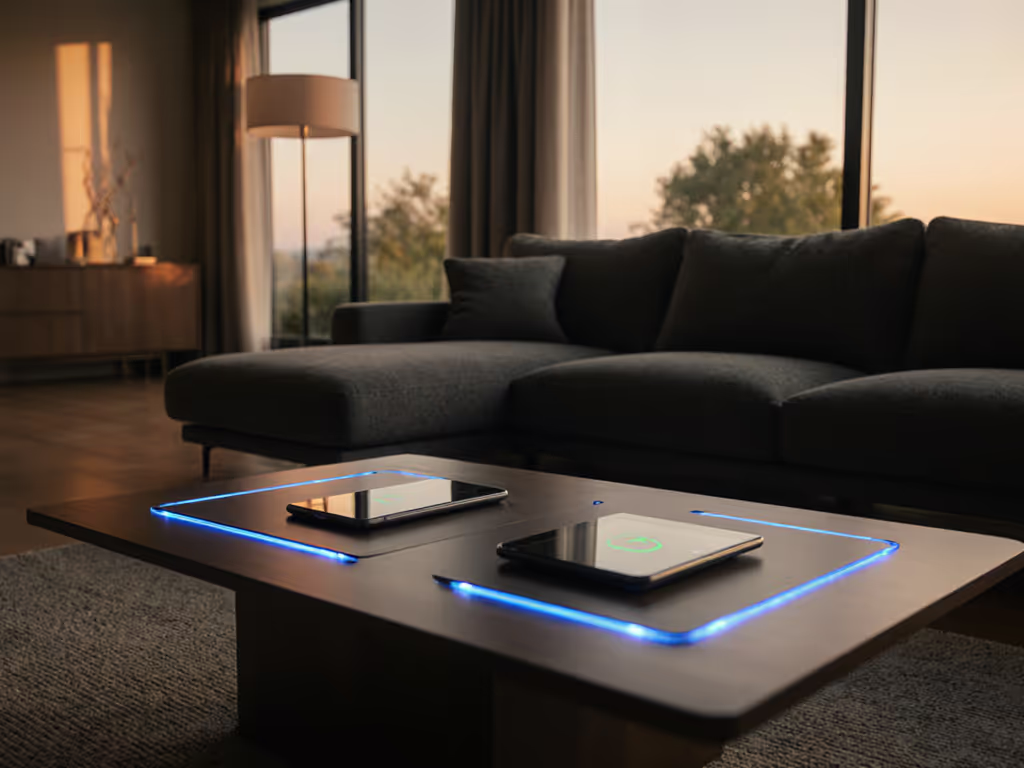
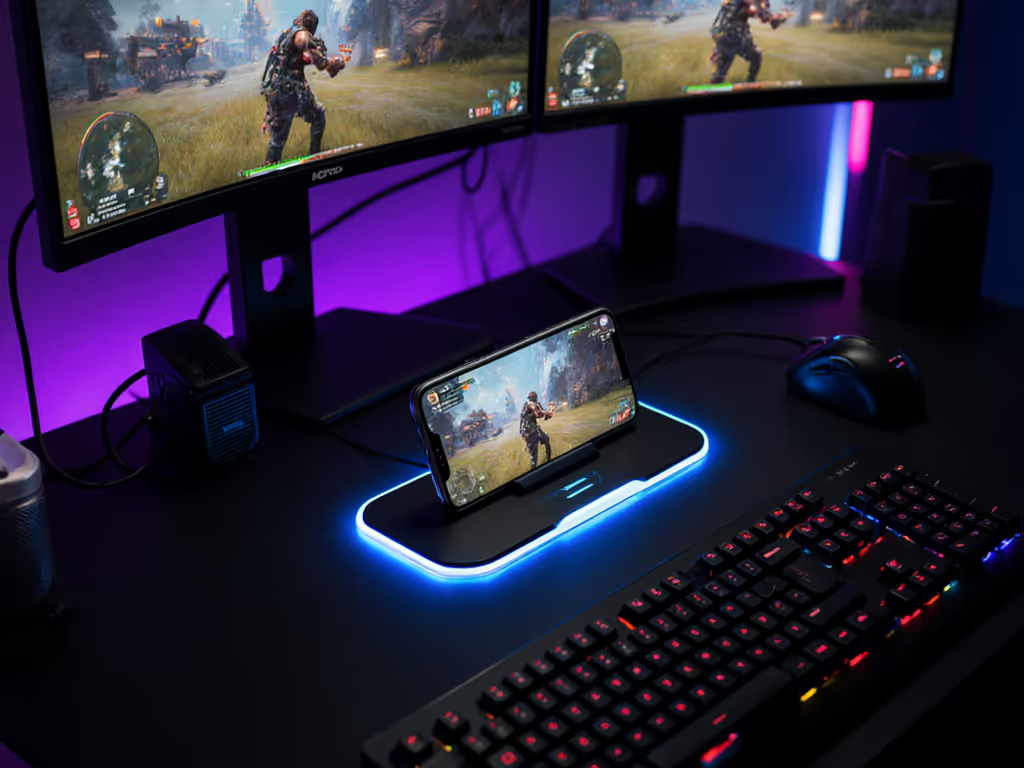

One Mat, Zero Clutter: Best Wireless Charging Desk Mat Solutions
Cut through the marketing and choose a mat that charges efficiently and safely. Discover three tested picks with verified sustained wattage, proper certifications, and the key adapter and Qi2 caveats that make or break real-world performance.
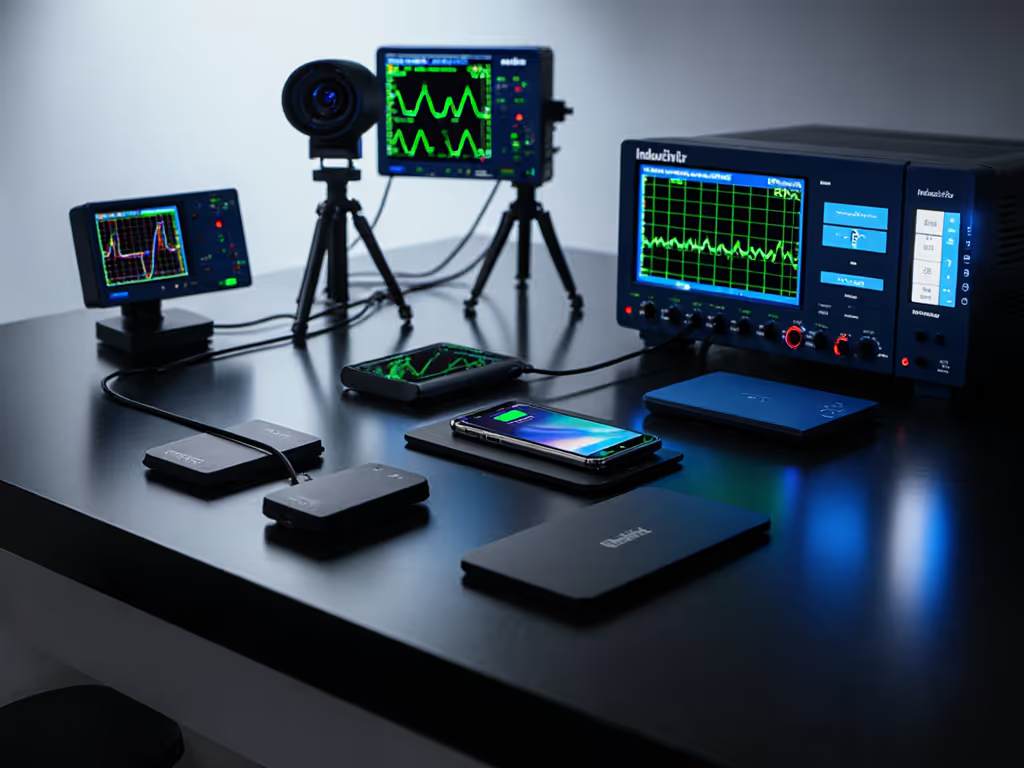
Wireless Charger Showdown: Lab-Tested Picks That Work
Six months of lab testing reveal why many “fast” chargers throttle and overheat, and highlight the few that deliver sustained power and reliable alignment. Get room-by-room picks and clear criteria - sustained watts per dollar, certifications, and the right adapter - to save money and protect your battery.
